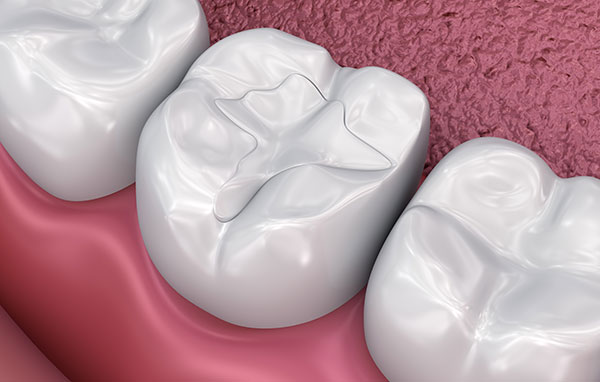Dental Fillings in Jupiter, FL
Don’t Let Cavities Go Untreated
Tooth decay is a common dental problem that can lead to cavities, or holes, in your teeth. If left untreated, these cavities allow decay-causing bacteria to penetrate deep into the tooth structure, potentially leading to infection, pain, and even tooth loss. Fortunately, dental fillings offer an effective solution to repair cavities, restore the affected tooth, and prevent further decay.
At Al Villalobos, DMD, PA, our general dentist in Jupiter offers dental fillings to help you say goodbye to the discomfort and potential complications of untreated cavities. Contact our dental office near you today by calling (561) 744-0677 to schedule your appointment. Our dental team proudly welcomes new patients from Jupiter, Hobe Sound, Limestone Creek, Tequesta, Palm Beach Gardens, and surrounding areas.

What Are Dental Fillings?
Dental fillings are dental restorations used to fill cavities and repair tooth decay or damage caused by trauma or wear. The filling material is placed directly into the cavity (dental caries) after the dentist removes the decayed portion of the tooth. This process seals off the affected area, preventing bacteria from entering and causing further damage.
With dental fillings, Dr. Al Villalobos can help patients near Tequesta with:
- Restoring the structural integrity of the tooth, preventing further decay and damage.
- Alleviating tooth sensitivity and pain associated with cavities or damaged teeth.
- Improving the appearance of the tooth, especially when tooth-colored materials are used.
- Preserving the tooth’s function and aesthetics for years to come.
Why Choose Dr. Villalobos for Your Dental Fillings?
At our Jupiter dental practice, Dr. Villalobos combines gentle technique with advanced materials to provide comfortable, long-lasting dental fillings. We take time to explain your options and help you choose the best filling material for your needs and budget. Using modern anesthetic techniques and a caring approach, we ensure your filling procedure is as comfortable as possible while delivering results that restore both function and appearance.
Types of Dental Fillings
There are various types of dental fillings, some more commonly used than others. Types of dental filling materials may include:
Composite Fillings
Composite fillings, often referred to as tooth-colored fillings or composite resin fillings, are made from a mixture of plastic and fine glass particles. They are designed to match the natural color of your existing teeth, making them an attractive option for fillings in the front teeth or other visible areas.
Composite fillings bond directly to the tooth structure, providing good support and a natural appearance. However, they are not as durable as amalgam fillings and may need to be replaced more frequently.
Amalgam Fillings
Amalgam fillings, also known as silver fillings or silver amalgam fillings, are a mixture of mercury, silver, tin, copper, and other metals. They are known for their durability and strength, making them a popular choice for fillings in the back teeth (molars), where chewing forces are higher.
However, due to concerns over mercury exposure, especially in developing fetuses and young children, many dentists and patients now opt for mercury-free alternatives like composite resins.
Ceramic Fillings
Ceramic fillings are made from porcelain or other ceramic materials. They’re tooth-colored, offer excellent aesthetics, and are highly resistant to staining. While more costly than other filling materials, ceramic fillings are a durable and attractive option for areas of the mouth that require both strength and aesthetics.
Gold Fillings
Gold fillings are composed of a gold alloy mixture and are known for their exceptional durability and resistance to wear. However, they’re more expensive than other filling materials and may require multiple office visits for proper fitting and placement.
Glass Ionomer Fillings
Glass ionomer fillings are made from a mixture of acrylic and glass materials. They release fluoride, which can help prevent further tooth decay around the filled area. These fillings are often used in non-load-bearing areas or for children’s teeth due to their lower durability.

Benefits of Dental Fillings
There are numerous benefits of dental fillings for oral health and overall well-being, including:
- Stopping further decay and preventing infection
- Restoring the affected tooth’s function and appearance
- Alleviating pain or discomfort caused by cavities or damaged teeth
- Preventing tooth fractures or the need for more extensive dental work
- Improving chewing ability and confidence in one’s smile
Do You Need Dental Fillings in Jupiter?
To determine your need for dental fillings, our general dentist in Jupiterwill evaluate the following:
- Presence of a Cavity: Dental fillings are primarily used to treat cavities. The first thing we’ll look for is the existence of a cavity in a tooth. X-rays and a visual examination help our dentist identify the extent of the decay.
- Tooth Structure: The extent of the damage to the tooth structure is crucial. Dental fillings are typically recommended for minor to moderate decay. If the decay is too extensive, other treatments like dental crowns or root canals may be necessary.
- Patient’s Overall Health: A patient’s overall health and medical history are considered. Certain medical conditions or medications may affect the choice of filling material or the patient’s ability to undergo the procedure.
- Allergies or Sensitivities: Some individuals may have allergies or sensitivities to specific dental materials used in fillings. Dentists must consider these factors when selecting the appropriate dental filling material.
- Adequate Tooth Structure for Support: There must be enough healthy tooth structure remaining to support the filling. If the tooth is severely compromised, you may not be a suitable candidate for a filling, and alternative treatments may be necessary.
- Patient’s Preferences: Our dentists will also take into account the patient’s preferences, especially if there are cosmetic concerns. Tooth-colored composite fillings are preferred by many patients for aesthetic reasons, but other options like amalgam or gold fillings are also available.
- Budget and Insurance: Financial considerations play a role in determining candidacy. Patients should discuss the cost of the filling and whether their dental insurance covers the procedure.
- Alternative Treatments: We may also discuss alternative treatments with the patient, especially if a filling isn’t the most suitable option. This could include dental crowns, inlays, onlays, or even tooth extraction in severe cases.

The Dental Filling Process at Al Villalobos, DMD, PA
The process of getting a dental filling in our Jupiter office typically involves the following steps:
- Numbing the Affected Area: Our Jupiter dentist will administer a local anesthetic to numb the area around the affected tooth, ensuring a painless procedure.
- Removing the Decay: Using a dental drill or laser, the dentist will carefully remove the decayed portion of the tooth, creating a clean space for the filling material.
- Preparing the Tooth: The cavity will be shaped and cleaned to create a suitable surface for the filling material to bond to the tooth structure.
- Applying the Filling Material: The chosen filling material, such as composite resin or amalgam, is placed into the prepared cavity and shaped to match the natural contours of the tooth.
- Curing or Hardening: For composite fillings, a special blue light or UV light is used to harden or cure the material, bonding it to the tooth.
- Polishing and Finishing: After ensuring proper fit and bite alignment, the dentist will polish the newly filled tooth to achieve a smooth and natural appearance.
The result is a restored tooth that’s both functional and aesthetically pleasing while preventing further decay and maintaining our patient’s oral health.
Caring for Your Dental Filling
To ensure the longevity of your dental fillings, it’s crucial to maintain good oral hygiene habits. This includes:
- Brushing twice a day with fluoride toothpaste
- Flossing daily to remove plaque and food particles
- Avoiding sticky or hard foods that could dislodge or damage the filling
- Wearing a mouthguard if you grind your teeth at night
- Visiting your dentist regularly for check-ups and cleanings
By taking proper care of your dental fillings, you can help prevent further decay, prolong the life of your fillings, and maintain a healthy, beautiful smile.
How Much Do Dental Fillings Cost in Jupiter?
On average, a dental filling costs between $50 and $250. However, certain factors will affect the total cost of your filling treatment, such as the type of filling material, the location of the dental practice, and the complexity of your procedure. In most cases, dental insurance covers at least a portion of dental filling expenses.
Frequently Asked Questions
The lifespan of your filling depends on the material used and your oral care habits. Amalgam fillings typically last 10-15 years, while composite resin fillings last five to 10 years. With proper oral hygiene and regular check-ups at our Jupiter office, your fillings can last even longer.
No, dental fillings are not painful during the procedure. Dr. Villalobos uses a local anesthetic to numb the area completely before beginning work. Some patients may experience mild sensitivity after the anesthesia wears off, but this is temporary and manageable with over-the-counter pain relievers.
After your filling, avoid eating hard or sticky foods for the first few hours. Some mild sensitivity to temperature or pressure is normal for a few days. Continue brushing and flossing normally, and contact our Jupiter office if you experience prolonged pain or if your bite feels uneven.
Absolutely! Our Jupiter dental practice proudly serves patients from throughout Palm Beach County, including Palm Beach Gardens, Tequesta, Hobe Sound, West Palm Beach’s Northside areas, and surrounding communities. We’re conveniently located for easy access.
Restore Your Smile and Oral Health Today!
Dental fillings play a vital role in restoring the health, function, and aesthetics of our teeth. Whether it’s addressing cavities, reinforcing tooth structure, or enhancing smiles, the process of getting a filling is a routine yet essential dental procedure. If you’re experiencing any dental discomfort or suspect you might need a filling, don’t hesitate to reach out to our dentist for a thorough examination.
Schedule an appointment today by calling our Jupiter, FL, dental office at (561) 744-0677, and take the first step toward maintaining your radiant smile and overall well-being. Conveniently located near West Palm Beach’s Northside areas, including Hobe Sound, Tequesta, and more, our practice offers accessible general dentistry services.
